No.2
Anaerobic adhesives
Features
What is "anaerobic" about anaerobic adhesives?
"Anaerobic" is not a very familiar word, but it literally means that it "dislikes air," and the adhesive only hardens when the "air (oxygen) is blocked."
Along with "blocking the air," there is another essential condition for anaerobic adhesives to harden. This condition is "contact with metal." In other words, it will not cure without metal. That is to say, it is an adhesive suitable for bonding metals to each other.
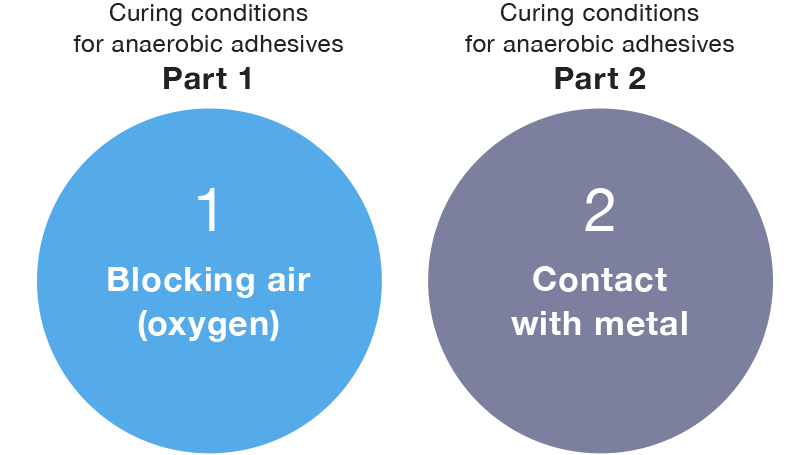
Other features (advantages)
Other advantages of anaerobic adhesives include the following.
-
One-part solvent-free
- Easy to use without need to mix
- Solvent-free and environmentally friendly type
-
Fast curing at normal temperature
- Hardens immediately at the appropriate temperature
Next, let's look at the hardening process of anaerobic adhesives.
Curing method
Composition of anaerobic adhesives
Anaerobic adhesives are about 95% composed of components called monomers, and about 5% of "components that start reacting in the presence of metal" and others.
-
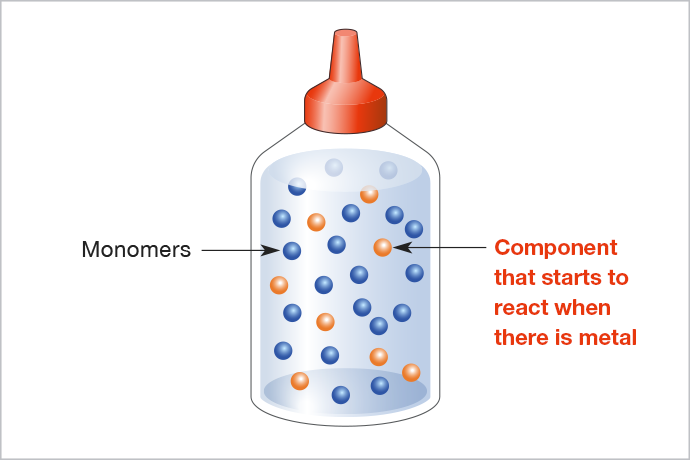 1 A "reaction initiator" is the component that starts to react when there is metal.
1 A "reaction initiator" is the component that starts to react when there is metal. -
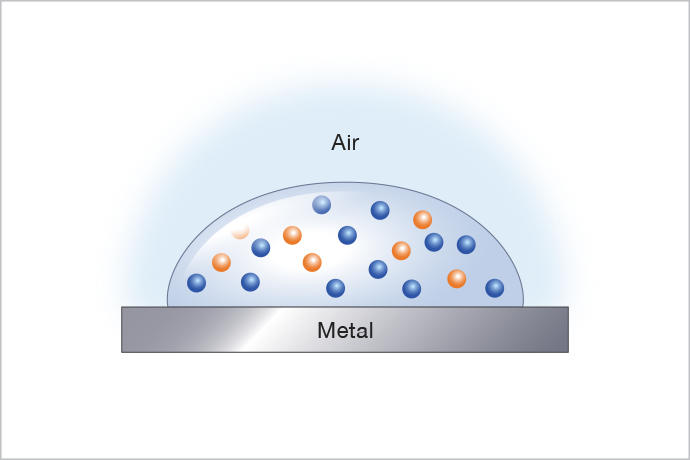 2 If there is contact with the air ...
2 If there is contact with the air ...
No reaction has occurred yet -
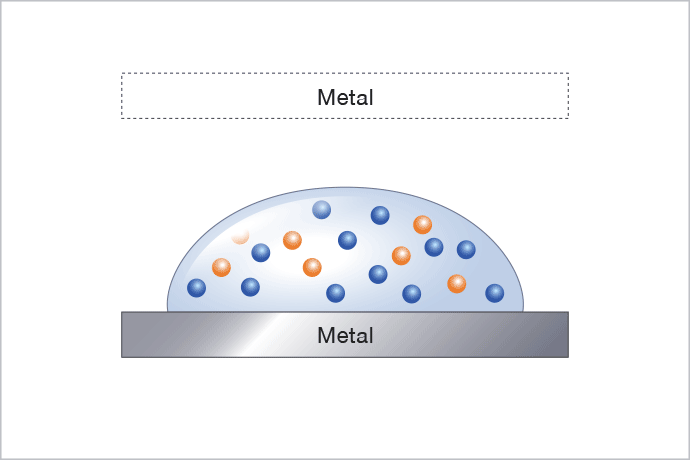 3 However, when the air is blocked off ...
3 However, when the air is blocked off ... -
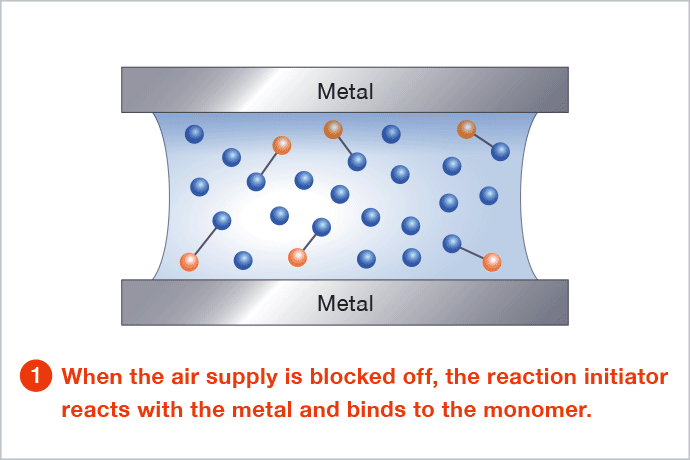 4 Curing begins with the "reaction initiator" as a trigger.
4 Curing begins with the "reaction initiator" as a trigger.
Uses
Curability varies depending on the type of metal.
As mentioned earlier, anaerobic adhesives are best suited for bonding metals to each other, but the rate of curing and adhesive strength will vary depending on the type of metal. This is shown in the graph below.
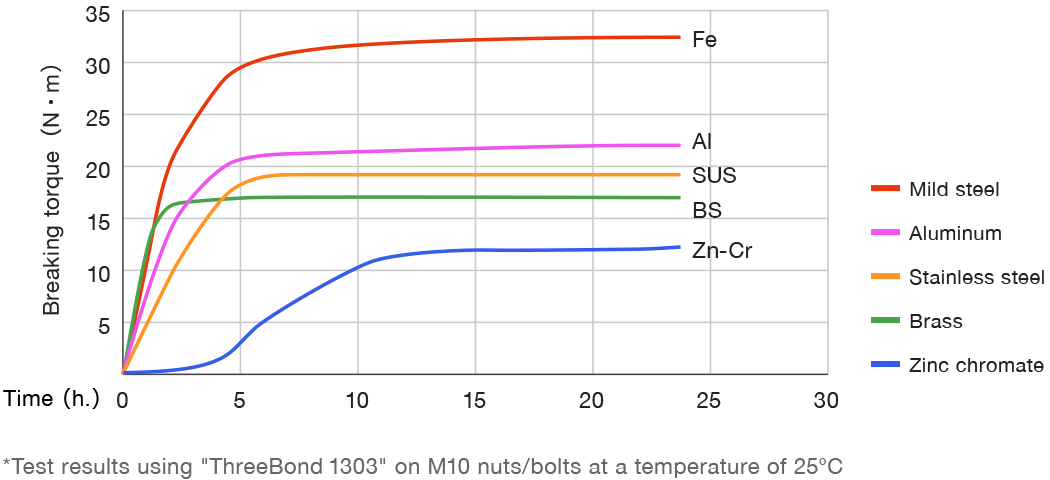
Relationship between adhesive strength and clearance (gap)
For fitting, the size of the clearance (gap) also affects the adhesive strength.
This is shown in the graph below.
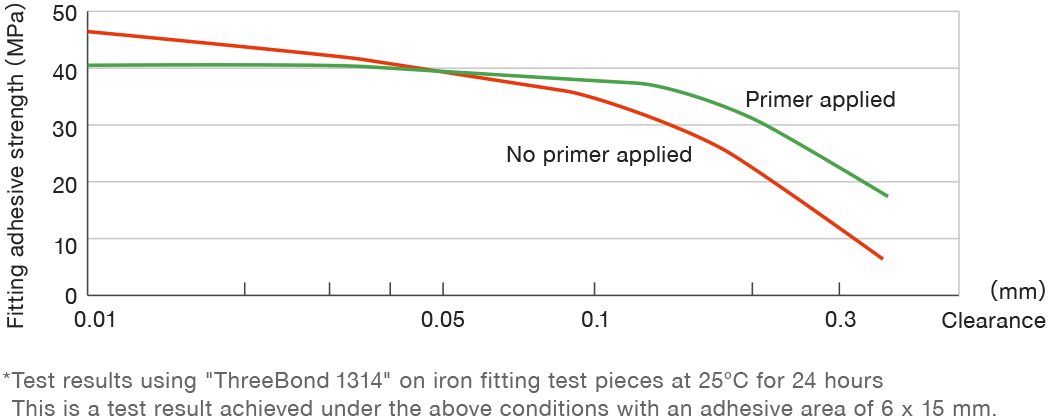
If the clearance is large,
we recommend using a "primer" as a supplement.
What is the most suitable application?
Anaerobic adhesives are adhesives for metals, but due to the features described above, they are particularly suitable for the following two applications.

Especially because of the small clearance, it can be said
that screw loosening prevention is the most important application.
Precautions when being used on plastic parts
Anaerobic adhesives are metal adhesives, but they can also be used on some plastics.
However, please note that the plastic may be affected depending on the material.
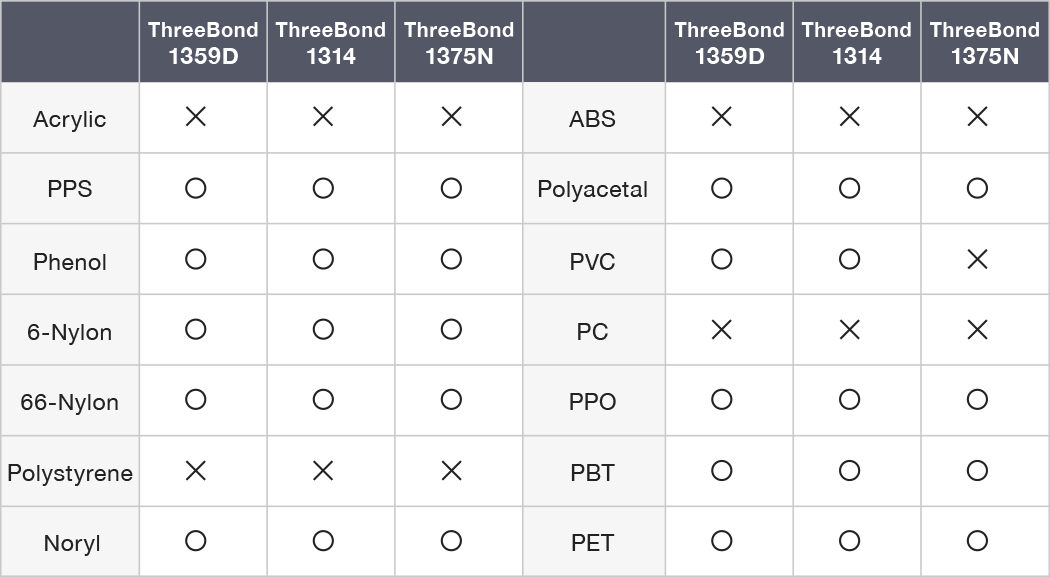
Do not use the part marked with "x" in the table as it is highly likely to be corroded.
FAQ
-
Q
It gels in the container.
-
A
The following causes are possible.
-
If stored in a separate sealed container to the original, the air may be blocked and the product may gel.
Please avoid storing in other containers. -
If stored in a high temperature environment, a reaction may occur and product may gel.
Store in the appropriate environment indicated on the label. -
When unused product is returned to the original container, metal impurities contaminate the container causing the product to gel.
Take only what you need and do not put any product back in the original container.
-
If stored in a separate sealed container to the original, the air may be blocked and the product may gel.
-
Q
It doesn't harden
-
A
- In winter or in a low temperature environment, it takes a long time to completely cure.
-
Adhesives used for inactive metals or plastic materials may not cure.
Please consider using a primer. - If the thickness of the adhesive is large, curing will be slow. Set appropriate crimping conditions.
Precautions for use
- Since the adhesive that is in contact with the air does not harden, it is necessary to wipe off any protruding areas.
-
It cures when metal ions, etc. are mixed.
Avoid storing in other containers or returning unused product to the original container. - Contact may cause a skin irritation. Please use with appropriate protective equipment.
Summary
Anaerobic adhesives are adhesives for metal that cure quickly at room temperature.
Optimal applications are relatively limited, but as long as there is a demand for metal bonding, it is an essential adhesive.
At ThreeBond, we strive to create products that best meet your design requirements.

Simply put, the more rusty a metal is, the easier it is for the adhesive to harden.